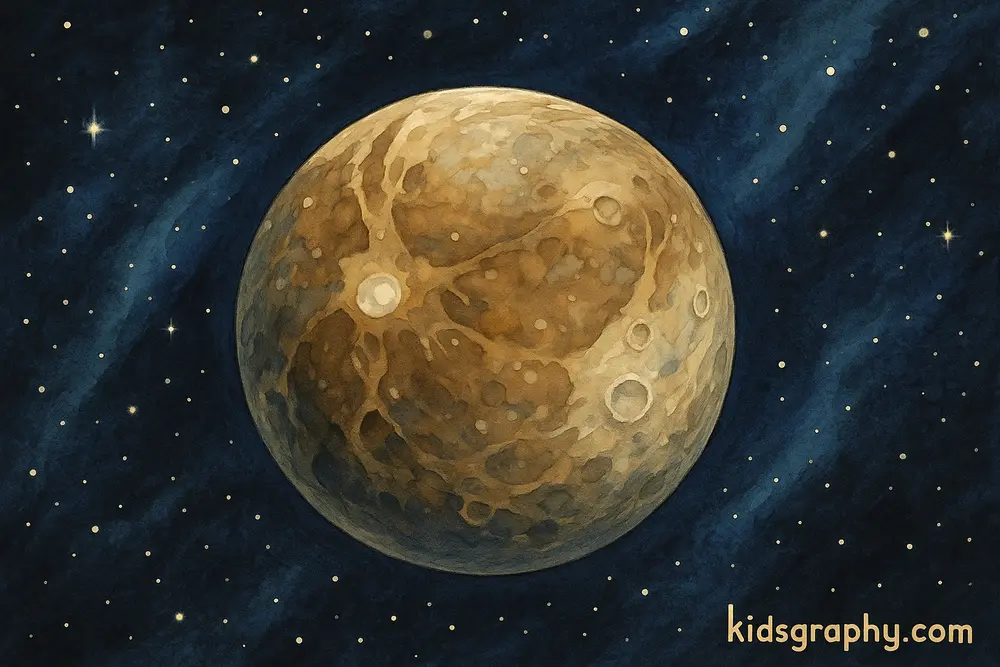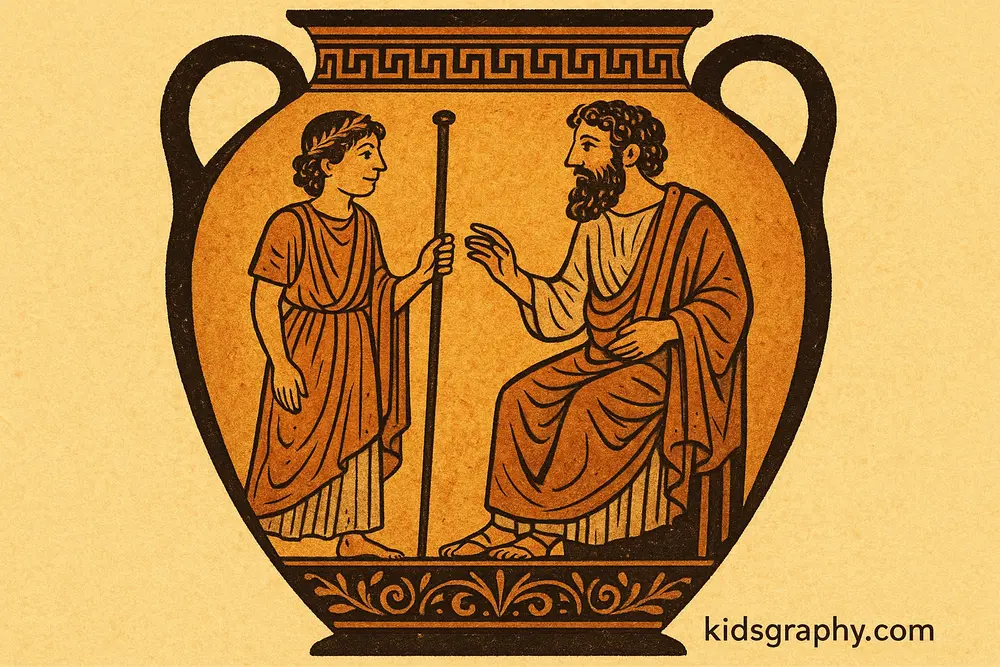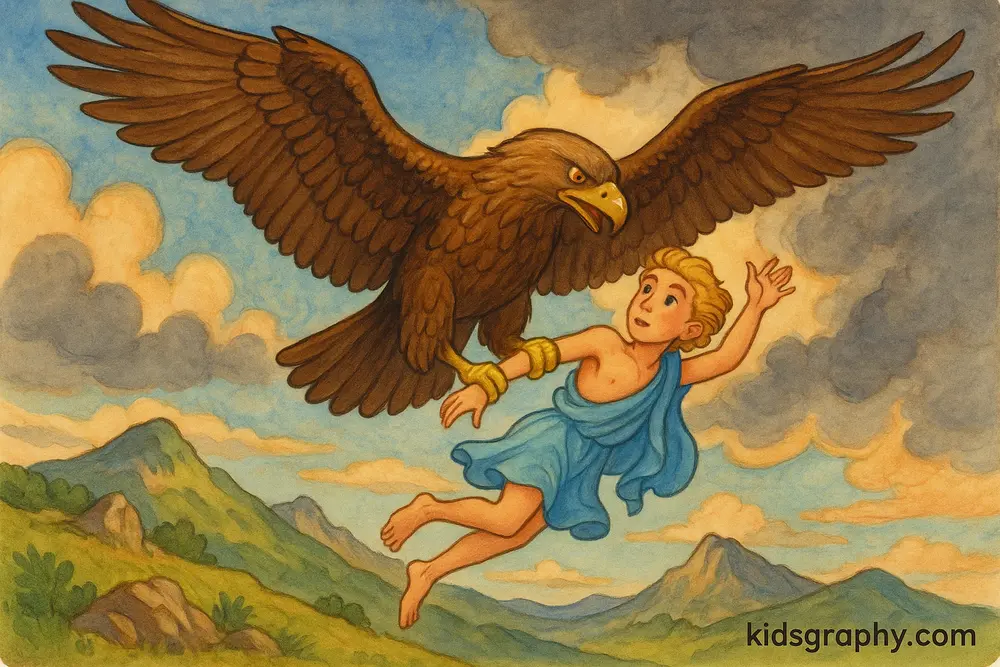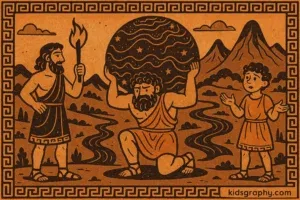Among all the beautiful stories in Greek mythology, the tale of Ganymede stands out. It’s a story of youth, beauty, and divine attention. Poets, artists, and writers often feature Ganymede in their works, remembering him as the boy Zeus took to Mount Olympus.
Let’s explore who Ganymede was, why Zeus chose him, and how his story shaped ancient and modern ideas about beauty and love.
Read More: Tartarus in Greek Mythology: Prison of the Gods
Who Was Ganymede in Greek Mythology?
Ganymede (also spelled Ganymedes) was a young Trojan prince, known for his incredible beauty. He was the son of King Tros of Troy, from whom the name “Troy” is said to come. His mother was likely Callirrhoe, a river nymph, though some versions vary.
His beauty was so stunning that even the gods took notice, especially Zeus, the king of the Olympian gods.
Read More: Perseus in Greek Mythology: Hero, Slayer of Medusa
The Abduction by Zeus
One day, while Ganymede tended sheep on the slopes of Mount Ida, Zeus saw him and instantly became captivated. In one version of the story, Zeus transformed into an eagle and swooped down from the sky, lifting Ganymede into the heavens.
Another version says he sent an eagle to carry Ganymede up to Olympus.
Why did Zeus do this?
- To make Ganymede the immortal cupbearer of the gods, replacing Hebe, the goddess of youth.
- To have Ganymede near him, as he loved the boy deeply—physically and spiritually.
This moment became one of the earliest stories in Greek myth to suggest same-gender affection among gods, making it both poetic and controversial.
Read More: Athena in Greek Mythology: Goddess of Wisdom & War
Ganymede’s Role in Olympus
The gods granted Ganymede eternal youth and immortality once he arrived on Mount Olympus. He served as the cupbearer of the gods, bringing nectar and ambrosia to the divine beings at their feasts.
But he was more than just a servant:
- He became Zeus’s beloved companion, treasured above many other mortals.
- His story was seen as a symbol of divine favor and elevated beauty.
- He lived forever among the gods, untouched by death or aging.
To honor him, Zeus placed Ganymede among the stars, creating the constellation Aquarius, the water-bearer.That’s why astrologers link Aquarius to water, air, and youthful energy.
Read More: Hermes in Greek Mythology: Messenger of the Gods
Ganymede in Classic Literature and Greek Art
Ganymede’s story has inspired writers and artists for centuries. In ancient Greece, his tale was used in:
- Poems by Homer and Virgil
- Plato’s dialogues, which discussed the spiritual love between older and younger men
- Ovid’s Metamorphoses, where the tale is told with poetic beauty
Classical artists often depict Ganymede being carried by an eagle or serving wine to Zeus. His image became a common symbol of divine beauty and youthful charm.
Even in the Renaissance, artists painted Ganymede with grace and emotion, continuing his legacy into modern culture.
Read More: Pandora in Greek Mythology: The First Woman’s Curse
What Does Ganymede Mean in Greek Mythology?
The name Ganymede comes from two Greek words:
- “Ganos” meaning joy or delight
- “Medomai” meaning to think or plan
Together, Ganymede’s name can mean “one who brings joy” or “delightful planner.”
In mythology, he brings joy to the gods and beauty to the skies, becoming a lasting symbol of love, immortality, and divine affection.
Themes and Symbolism of Ganymede’s Myth
Ganymede’s story is more than just a tale of beauty—it carries deeper symbolic meaning and emotional weight, especially in Greek culture and literature.
Themes Found in Ganymede’s Story:
- Ganymede’s abduction shows that gods could choose mortals, granting them a rare and powerful honor.
- Immortality – Zeus gives Ganymede eternal youth, which symbolizes the fleeting but divine nature of beauty.
- In classical Greece, scholars and poets often used Ganymede’s tale to discuss spiritual and romantic love between men, particularly in educational or noble circles.
- Service and Duty – Although beloved, Ganymede was still a servant to the gods, a reminder of roles and hierarchies even in Olympus.
Read More: Typhon in Greek Mythology: The Father of Monsters
The Constellation Aquarius and Ganymede
When Zeus placed Ganymede among the stars, he became the Aquarius constellation—the water-bearer. In astrology, Aquarius is known for traits like:
- Intelligence
- Visionary thinking
- Independence
- Emotional balance
Ganymede, with his graceful role and water-carrying symbolism, fits perfectly into this cosmic identity. In this way, Greek mythology Ganymede lives on both in the sky and in the zodiac.
People still associate Aquarius with fluidity, clarity, and freedom—traits that reflect Ganymede’s mythic personality.
Was Ganymede Worshipped?
Although people did not worship Ganymede as widely as Apollo or Athena, they honored him in some parts of ancient Greece—especially in Crete and Sparta, where his story reflected ideals of male mentorship and beauty.
He was also venerated:
- People honored Ganymede at Olympian festivals by pouring wine and libations in his name.
- In art and statues as the “divine youth” or the “cupbearer”
- In private rituals by lovers or scholars reflecting on divine affection
His presence served as a gentle reminder that beauty, love, and loyalty could be holy.
Read More: Chaos in Greek Mythology: The First Being of Creation
Ganymede in Modern Culture
Ganymede’s influence goes beyond myths. His name, image, and story appear in:
- Astronomers named Jupiter’s largest moon Ganymede to honor the boy Zeus loved.
- Art and sculpture – From Renaissance paintings to Greek pottery, Ganymede remains a symbol of ethereal youth.
- Literature – Writers like Shakespeare, Oscar Wilde, and C.S. Lewis reference Ganymede’s name or myth to explore gender, beauty, or divine love.
- In modern interpretations, people sometimes view Ganymede as an early symbol of same-gender affection in myth, especially because of Zeus’s love for him.
More Stories: Ganymede in Greek Mythology
FAQ: Ganymede in Greek Mythology
Zeus chose Ganymede, a beautiful Trojan prince, to serve as the cupbearer of the gods on Mount Olympus.
Captivated by Ganymede’s beauty, Zeus took him to Mount Olympus to serve the gods and remain eternally young.
Yes, Ganymede appears in works by Homer, Virgil, Ovid, and Plato, often symbolizing divine beauty and love.
People honor Ganymede as the Aquarius constellation, the water-bearer in the zodiac.
Astronomers named Jupiter’s largest moon Ganymede, reflecting the mythological connection to Zeus (known as Jupiter in Roman mythology).











